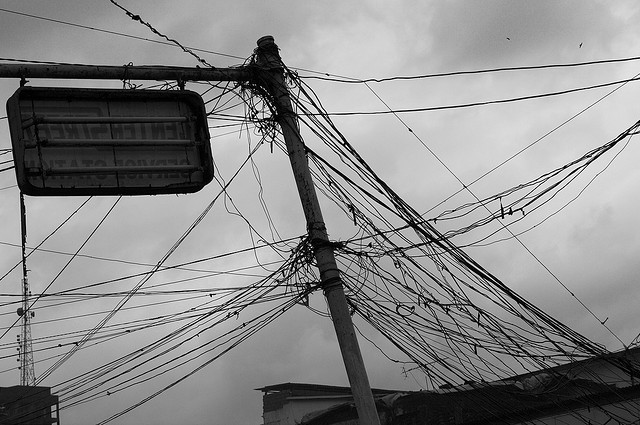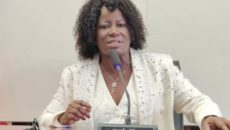To say that Liberia’s electricity situation is lacking is an understatement. About 10 percent of urban residents and less than 2 percent of rural residents currently have access to electricity — and the bulk of that is self-generated using generators and expensive imported fuel.
The most common form of energy in Liberia is “biomass” such as firewood, charcoal, and palm oil. That’s right, the vast majority of Liberians cook their meals, heat their homes, and get light at night by burning wood and oil.
Conservative estimates suggest that Liberia’s level of electricity demand will reach 41 megawatts by 2020 (up from earlier levels between 11 and 25 megawatts). To put Liberia’s current and projected electricity capacity in perspective, some have compared the nation’s capacity to the Dallas Cowboys’ stadium, which is estimated to consume up to 10 megawatts of electricity on any given game day.
However, Energypedia believes that Liberia’s demand for electricity will be 350 megawatts or more by 2020. This is due in large part to population growth, demand for consumer goods and services, and the ultimate recovery of Liberia’s economy to pre-conflict levels. Before Liberia’s devastating two civil wars, Liberia’s electricity capacity exceeded 400 megawatts.
Though Liberia has a network of rivers and a good potential for hydropower, two of its three operational hydropower plants were destroyed during the conflict. The war ended in 2003, but Liberia’s recovery has been slow — despite good intentions and plenty of aid.
President Sirleaf Comes into Power
In 2005, Liberia elected Ellen Johnson-Sirleaf, a former World Bank economist, to president. According to The Guardian, she “promised a radical plan to reform land laws, rebuild all levels of government, and devolve power to regional parts of Liberia that are already largely autonomous as a result of the country’s poor infrastructure.”
Alas, the job proved harder than expected. She fulfilled her campaign promise to bring electricity back to Monrovia by Independence Day, but only on a small, symbolic scale. Using $6 million in funds largely obtained from the U.S. and EU, President Sirleaf flipped the switch on an emergency power system which supplied electricity to two hospitals and a handful of streetlights on the first Independence Day since her election. Liberia at last had lights after 14 years of darkness.
By late 2010, Liberia still looked “like a hellhole.” However, Monrovia and some other urban areas had electricity, Liberia’s external debt had shrunk, school enrollment was up significantly, and tourism was beginning to take hold.
A World Bank report said by April 2010, the Liberia Electricity Corporation’s basic functions had been restored and about 2,500 customers were receiving electricity in Monrovia. Of note, after petroleum fuel use completely declined in the 1990s, demand had reached peak levels from the early 1980s, marking the “return of economic activity in Liberia.”
In 2011, despite progress, Sirleaf faced a challenging re-election campaign. Beloved throughout much of the world, her status at home didn’t guarantee re-election. She endured heckling and boos largely due to corruption scandals, and other abuses that took place within her administration. Uncertainty and threats of violence surrounded her re-election.
Sirleaf attributed the issues she was facing to a broken system that her administration inherited. “We found a totally collapsed economy, dysfunctional institutions, lack of proper laws and policies, low capacity, and a value system upside down,†she said, in an interview to Newsweek.
Sirleaf won the election. In a 2011 interview with The Guardian, she acknowledged the huge cost of powering Liberia – roughly $300 million. This amount was more than twice the size of Liberia’s annual budget at that time.
Until recently, borrowing the money was not an option because of $4.9 billion in aged outstanding external debt, of which Sirleaf has since obtained $4 billion in debt relief.
Fast-forward to 2015. The Mount Coffee Hydro Plant and the construction of other mini hydro plants will ultimately increase capacity from 22 megawatts to 80 megawatts.
Additionally, Liberia has partnered with its neighbors to supply electricity to various border communities. Among that is the electricity generated in Côte d’Ivoire that is now being used in parts of Nimba.
Where Does Liberia Go From Here?
It’s been 10 years, and progress has been made but Liberia is nowhere near its pre-conflict energy capacity. Money is flowing in, however. For example, the World Bank signed a $10 million Electricity System Enhancement Project in Liberia a few years ago to enhance the Liberia Electricity Corporation’s distribution services by providing cables, transformers, and other distribution materials.
Just this April, a mining company, Hummingbird Resources, signed an agreement to develop a 20 to 30 megawatt hydro power plant in southeast Liberia.
While money and foreign investments are needed, perhaps we shouldn’t solely look back to what Liberia’s energy infrastructure used to look like and instead look forward using new technologies such as off-grid and small-scale solar solutions.
USAID’s Power Africa has a new sub-initiative that does just that. Its Beyond the Grid initiative involves partnerships with 40+ investors and practitioners, over $1 billion in funding earmarked for off-grid and small-scale solutions, and innovative private sector business models that could help meet energy demand.
According to USAID, Power Africa “accelerates investments to develop resources responsibly, build out power generation, efficient distribution, and transmission, and expand the reach of mini-grid and off-grid solutions.” It also uses a two-pronged approach that addresses constraints to investments and drives forward reforms.
Some Liberian organizations are taking matters into their own hands, or at least getting help from others. For example, Phebe Hospital in Suakoko, Bong County currently gets its power from diesel generators at a cost of between $24,000 and $40,000 per month.
The hospital is now making the effort to switch. It is taking part in the “Skip the Grid” project, which was funded by the Rural Renewable Energy Alliance and the Women of the Evangelical Lutheran Church of America. A photovoltaic micro-grid solar power system will supply 95 percent of the hospital’s energy, saving the hospital $350,000 each year and reducing emissions.
There’s no easy answer to Liberia’s ongoing electricity problems, but it’s clear that if Liberia wants to grow into its full potential, energy needs to be one of its top priorities.
 Featured photo: Goya Bauwens



